It was the day before Christmas, and I woke in a motel across the road from the airport in Richmond, Virginia. I'd spent the previous day flying from Seattle to Richmond, after driving to Seattle the evening before. I was in Richmond to surprise my family for Christmas; only my sister-in-law knew I was there.
Since the surprise was set for Christmas day, I had all of Christmas eve to myself. After waking, I took a shower and wandered out to find breakfast, toting my camera, naturally. I was groggy and grumpy from the early hour (it was before eight there in Viriginia, and that meant that in BC it was before five). Between my motel room and the breakfast place, I found this grey bird on some holly; he seemed to be making fun of my grumpy morning disposition. |
|
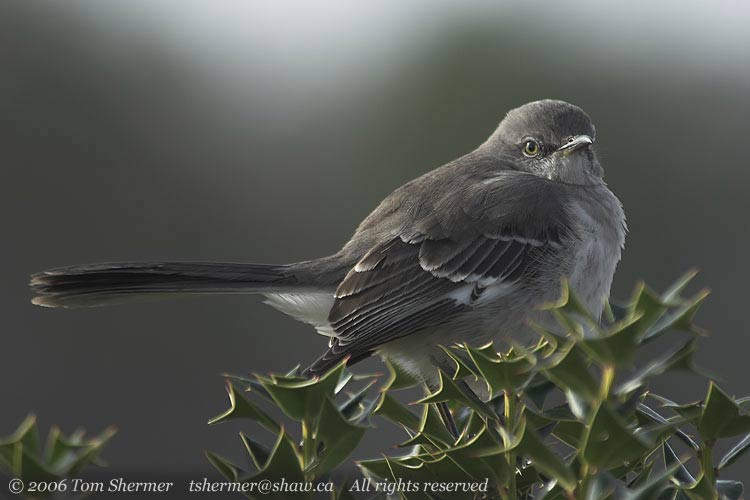 |
That made sense, actually...he was a Northern Mockingbird.
At breakfast, I looked at maps and decided to start my day's excursion by visiting Dorey Park, a decent-sized park that was relatively close. Once breakfast was done, I put that plan into action.
The first thing I noticed, while driving up to the park, was that there were several raptors circling. Once I was out of the car, I recognized them as Turkey Vultures. There are a lot of these vultures in these parts...they're quite a common sight. |
|
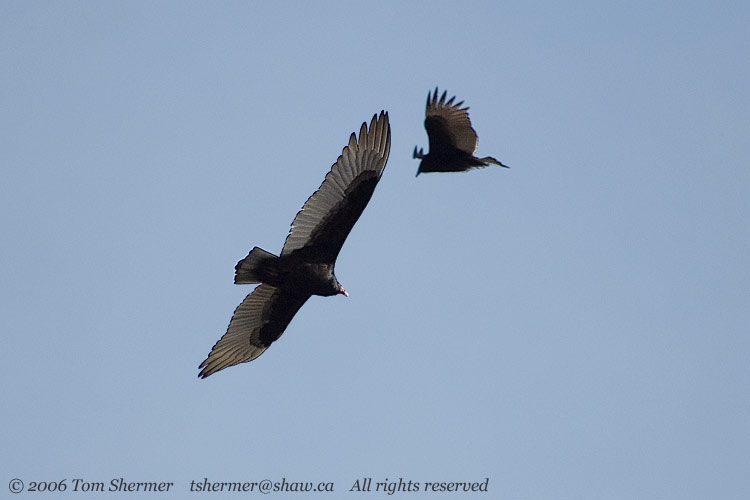 |
| In the front part of the park, there was a lot of lawn and a little bit of a stubble field. I walked along a line of trees that surrounded a little ditch and eventually came upon a few old agricultural buildings, like this barn. |
|
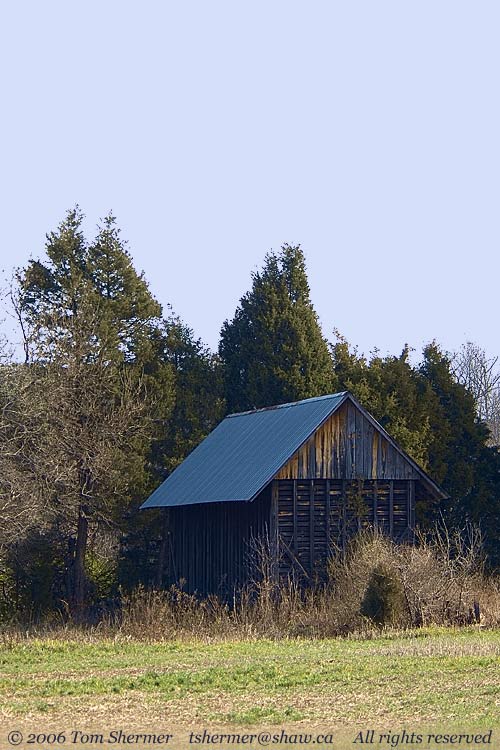 |
| Back in the trees, a wren popped out. I was a bit excited (add that to groggy) because it had a yellow-orange breast, and I'd never seen a wren with such color, so I knew it was a lifer. I also knew that wrens are generally pretty quick and secretive, so I lifted the camera and shot what I could. Unfortunately, I wasn't able to get the camera to focus on the bird, and I ended up with several blurry photos of a Carolina Wren. |
|
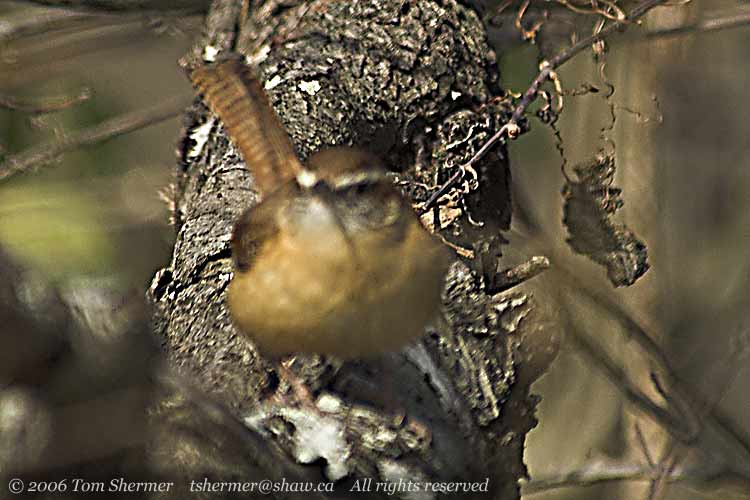 |
It seemed a bit fitting, though; it was a blurry time of the morning for me.
The next bird I found was instantly recognizable, even though we don't get 'em out west. She was a (female) Northern Cardinal; her combo bill and crest are quite distinctive. And unlike the wren, she was polite enough to hang around until I got focus.
|
|
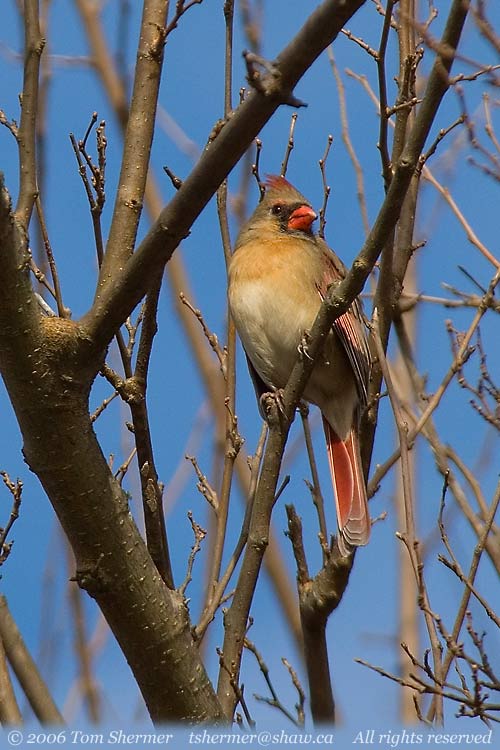 |
| I poked around the line of trees some more, not finding much. As I headed back to the car, some more vultures flew over. |
|
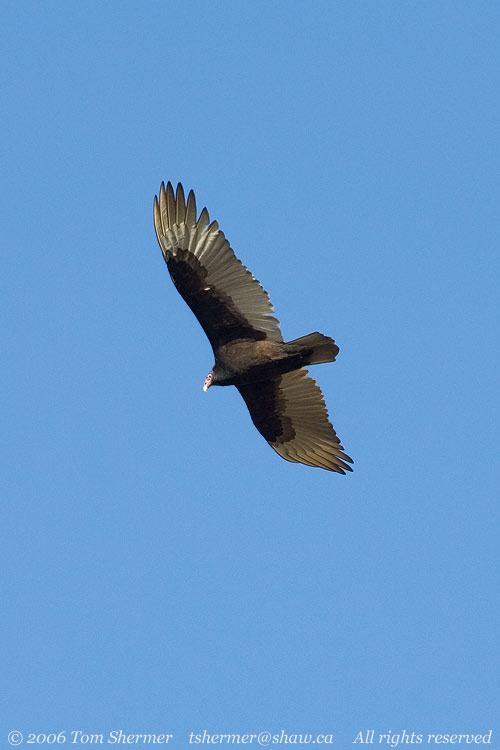 |
| Did I mention that vultures are a common sight in these parts? |
|
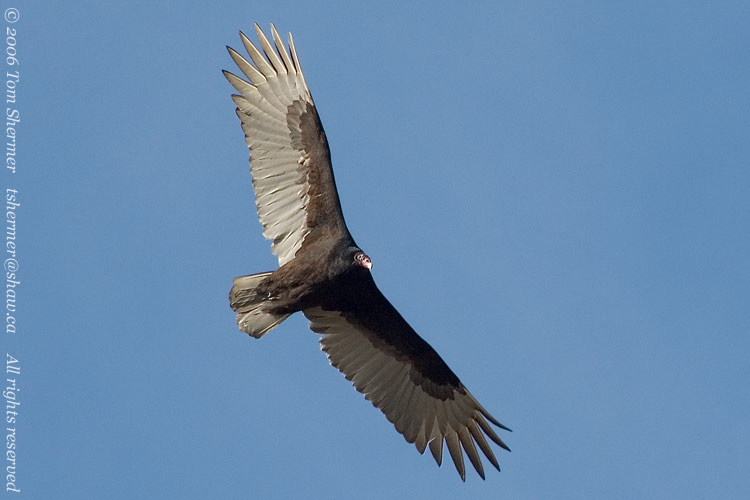 |
| Back in my rental car, I drove past some sports fields to the back part of the park, which had a small pond with a path around it. I got out and walked around the pond. When I was about halfway around, I spied a goose on the other side. This goose had a strange behaviour; she was hiding her bill behind a tree. |
|
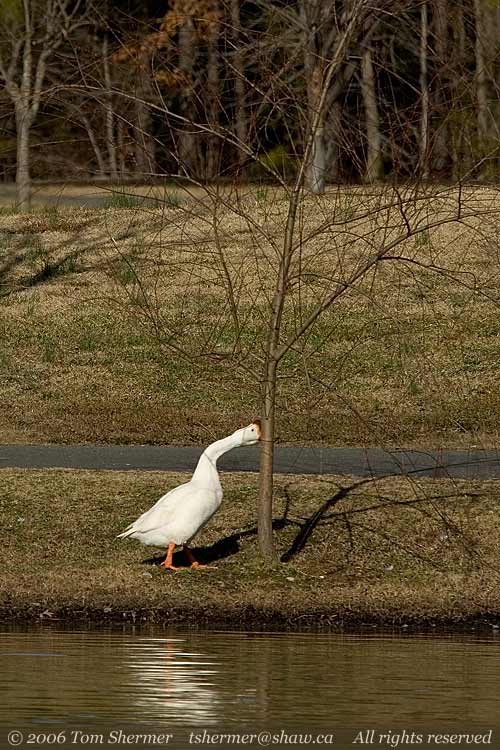 |
Some geese are just strange.
A little further along, I watched a gull come in for a landing. Gulls are normally hard to identify but this one was definitely a Ring-billed Gull. It seemed odd that I was a continent away from my normal habitat and yet I just happened to find a gull that I could identify. I was expecting to not be able to make any sense of the gulls in Virginia.
|
|
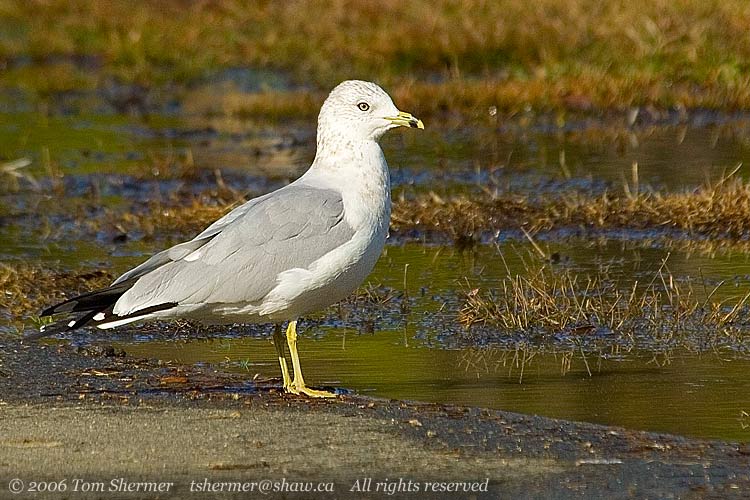 |
| I eventually made it around the pond to where the strange goose was, and I discovered the reason for her behaviour. It seems that she had some sort of big protuberance issuing from the top of her bill. No wonder she was shy about it. |
|
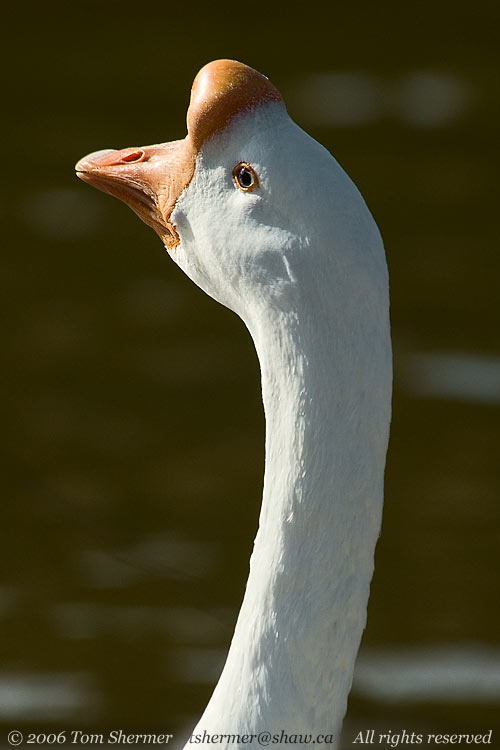 |
| But then I discovered that there was more than one of them. |
|
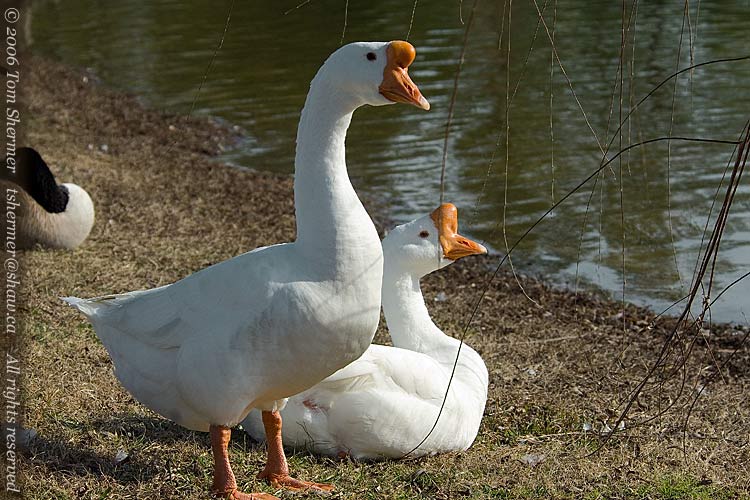 |
Later research established that these are domestic Swan Geese. Wild Swan Geese (Anser cygnoides) are brown with a black bill and live in mainland Asia. The wild variety lack the large knob on the bill.
|
|
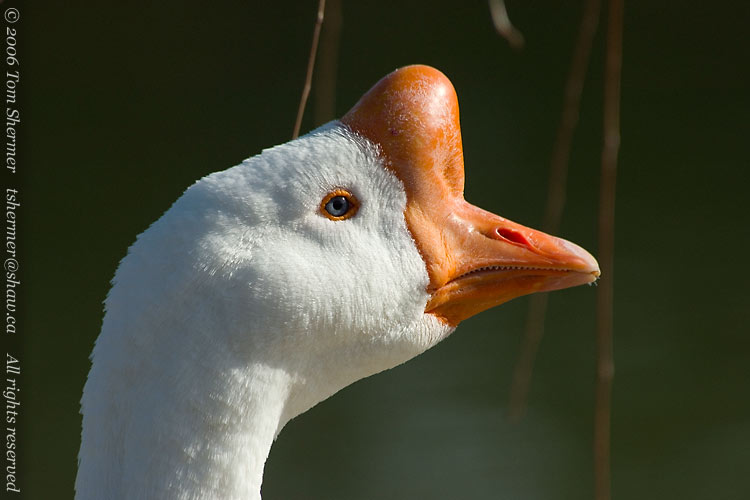 |
| Nearby there was another domestic goose species, the domestic Greylag Goose. Wild Greylags (Anser anser) are European and Asian, and they look roughly the same as this one (although their bill tends to be more pink). |
|
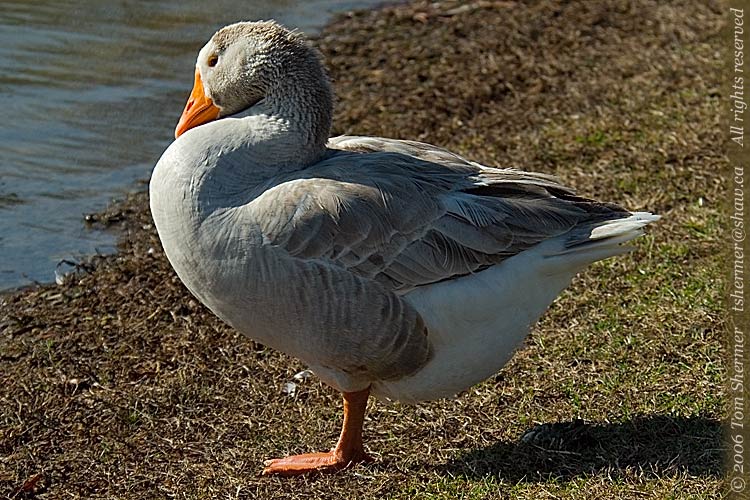 |
| Maybe this park has a sign in it that says "if you've just escaped from a farm, come live here," because there were a couple more species of domesticated waterfowl in evidence. This duck looks to be a Duclair or Blue Swedish. |
|
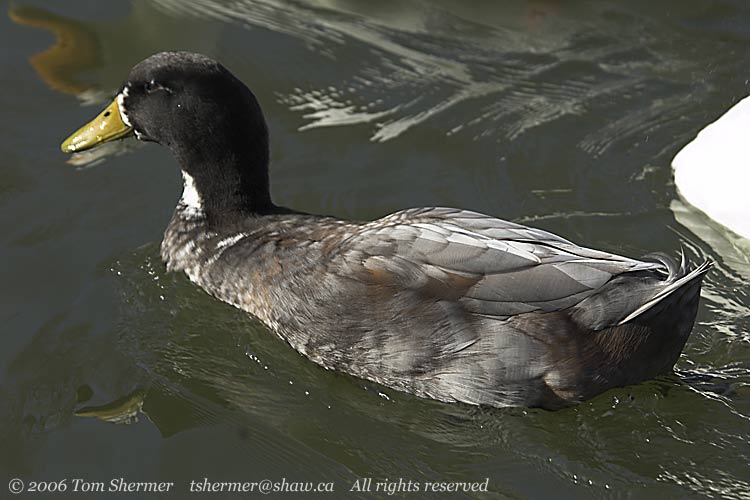 |
| And that all-white duck that he's hanging out with is a Pekin duck. |
|
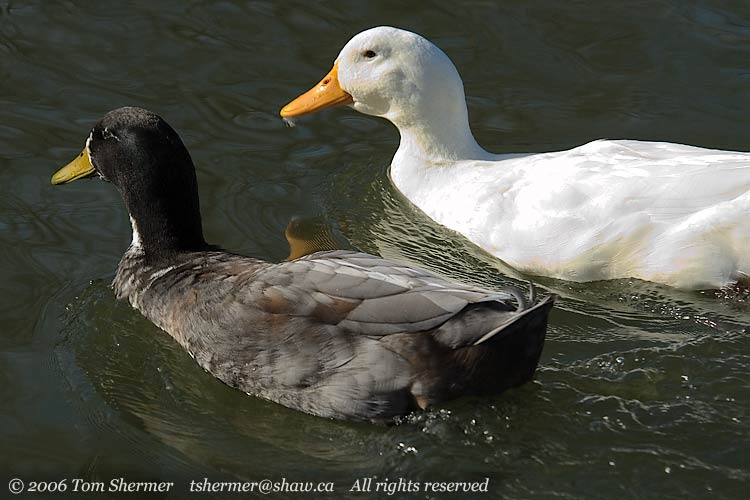 |
Pekin, Blue Swedish, and Duclair are all breeds descended from Mallards. In fact, most domestic breeds are descended from Mallards; only the domestic Muscovy Duck (descended from the wild Muscovy Duck) is not.
The Greylags were being particularly cooperative, so I took a few more photos of them.
|
|
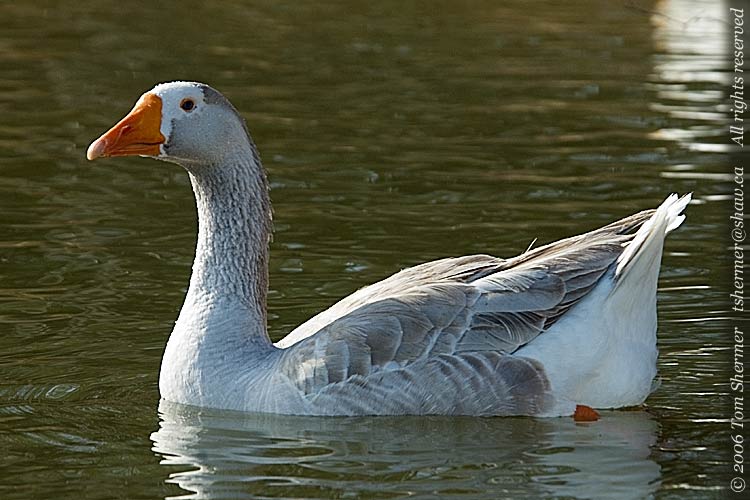 |
| |
|
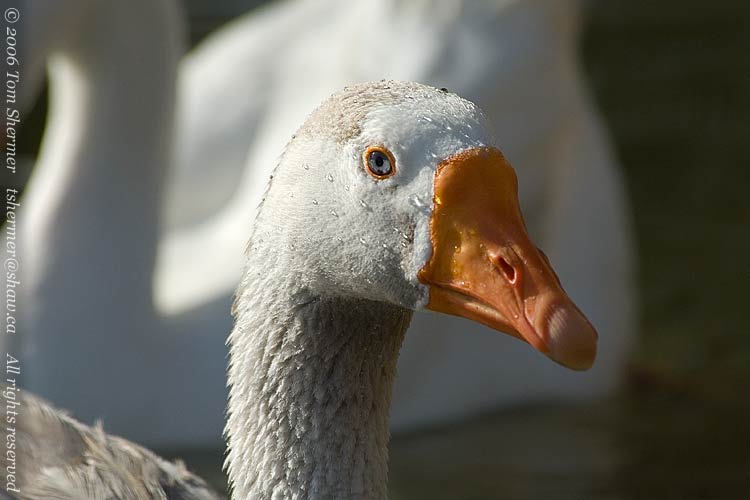 |
But now I had made a full circuit of the pond, and so I loaded into the car and headed out of the park.
Once on the road again, I headed in a random direction, and soon found signs leading to Richmond National Battlefield Park. (This is not that surprising, as the park is on many different disconnected parcels of land spread around the city.) Following the signs, I ended up at a section of the park that consisted mainly of forts and their associated earthworks. My first stop was by the earthworks of Fort Gilmer.
I had stopped at Fort Gilmer because I had seen a number of birds along the side of the road just one turn back. As I walked that way, a knocking sound alerted me to the presence of a woodpecker. Luck was with me: the knocking continued and I was able to locate the source. It was a woodpecker that we don't get out west, the Red-bellied Woodpecker, Melanerpes carolinus, female.
|
|
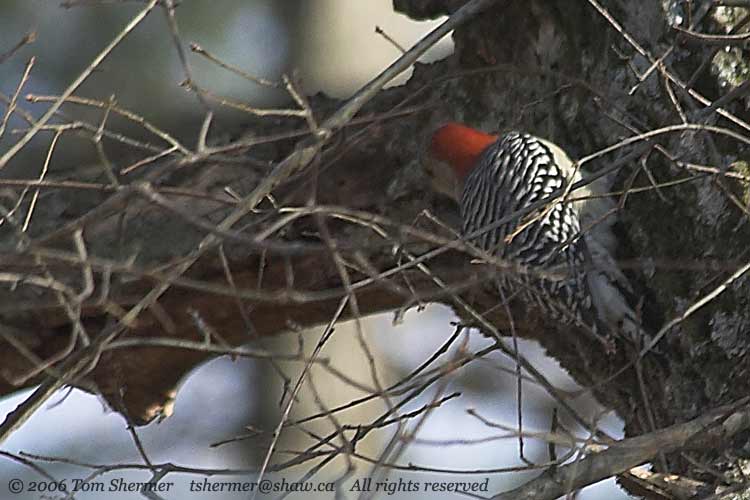 |
That was pretty neat; the only Melanerpes that we get in BC is M. lewis, Lewis's Woodpecker. And we don't even get that in the city; I generally have to drive a few hours east if I want to see one.
Back by the bend in the road, I spent a half an hour or so waiting for birds to get accustomed to me, and taking their photos. One of the fellows there was a bluebird. This is an Eastern Bluebird (Sialia sialis), and it's the one North American bluebird that we don't get out west. These eastern guys sing better than their Western and Mountain counterparts, but this one didn't grace me with a concert. |
|
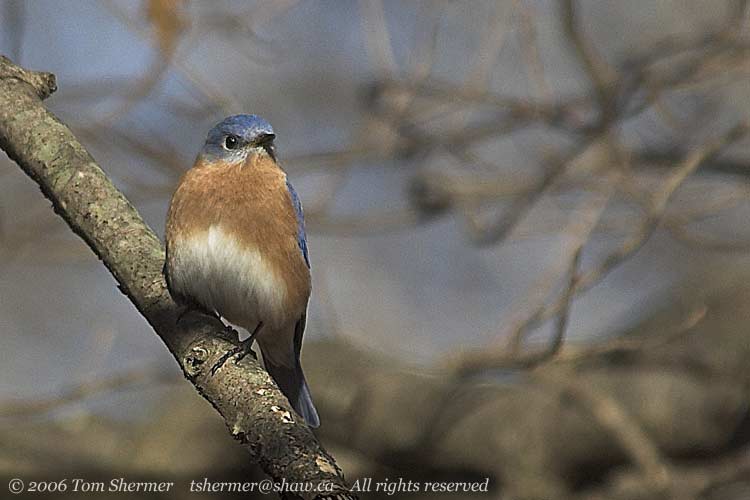 |
The other birds at the bend included a Blue Jay, which completely evaded my lens, several Northern Mockingbirds and American Robins, and some Song Sparrows. I didn't end up with many good shots of them, so I'll spare you.
Across the road from the birds was a little house with a couple of goats in the yard. I guess when you're the smaller goat you have to put up with the indignity of the big guy flicking his tail in your face. |
|
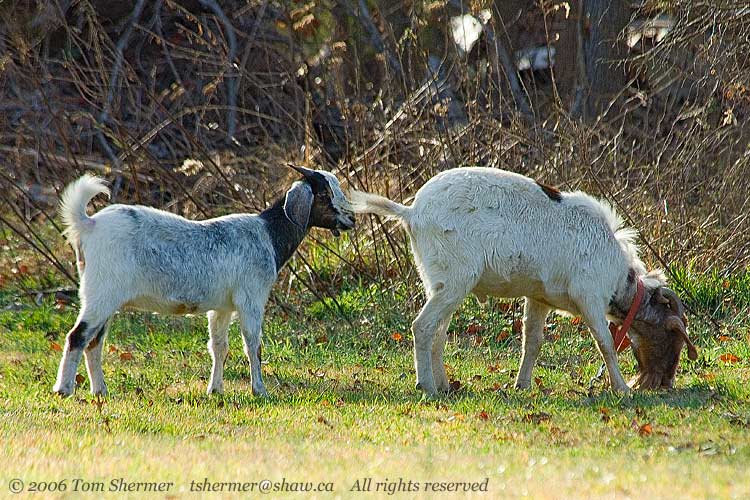 |
I wonder if there's a Charles Atlas for goats.
The driveway to the house had its own goat, and an interesting sign. |
|
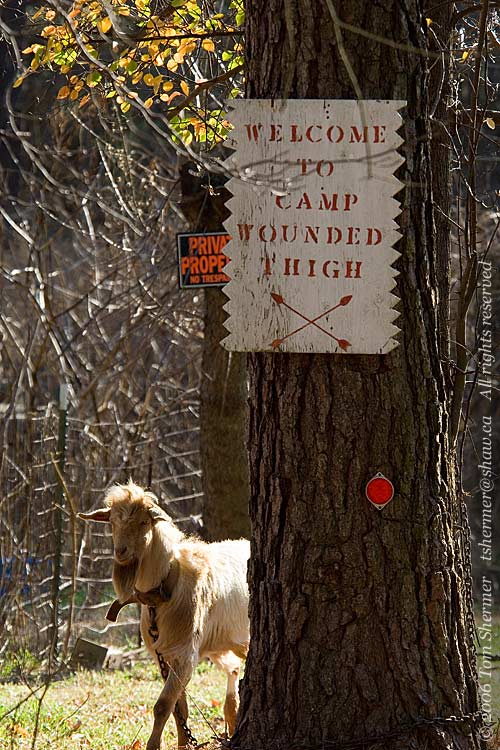 |
Or maybe that's two interesting signs..."Welcome" and "no trespassing"...quite the combination. I didn't know which sign to believe, so I stayed on the safe side and avoided the property.
But I couldn't avoid taking more photos of the handsome driveway goat. |
|
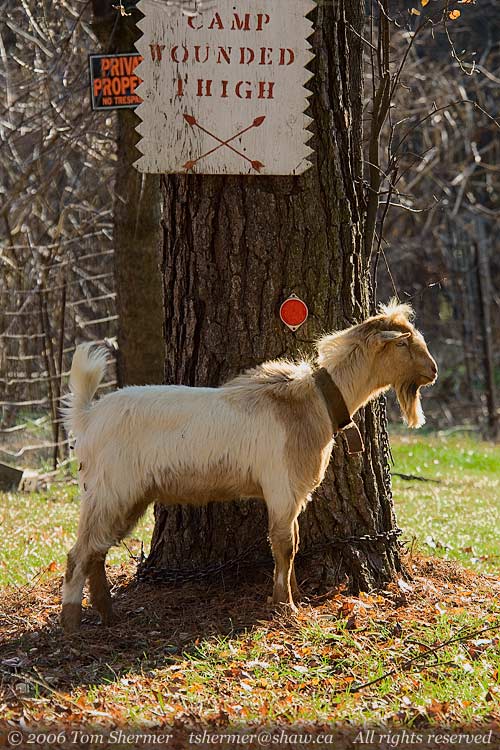 |
I made a couple of more stops at other parts of the park in this area, but being as it was the middle of the day, the birds were few and far between. So I enjoyed just walking around the old forts and reading the interpretive signs.
It was winter and the days were short, though, so I soon started moving on. I made one more stop at a place where a creek crossed a road. There I mounted an earthen dyke to find a mainly-empty lake bed on the other side. Only a small amount of water remained, feeding the creek.
I saw a hawk circle and then land in a tree on the other side of the lake bed. I wasn't able to identify the hawk, so I took some photos. He was too far away, though, and even the photos didn't help. |
|
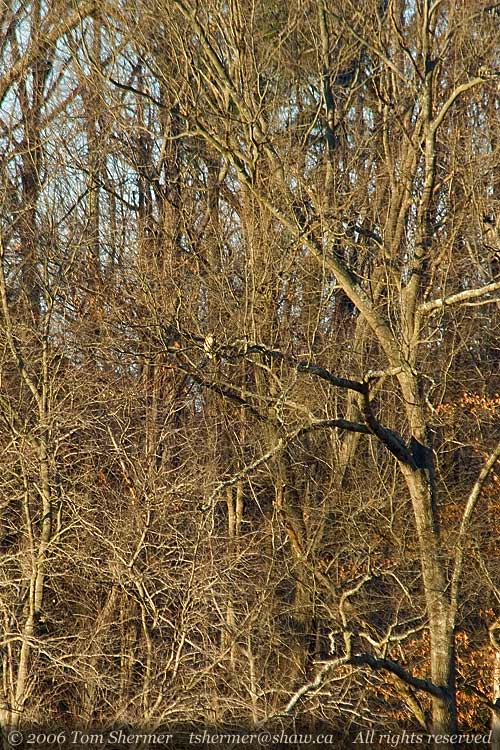 |
| Back by the road, I found what looked like an air conditioner in the creek. I'd always wondered why creek water was so cold. |
|
 |
|
I made it back to the motel to take a brief rest before heading out to dinner. On exiting the car, I heard a slightly-familiar cooing and found that the back parking lot was playing host to a number of Mourning Doves. |
|
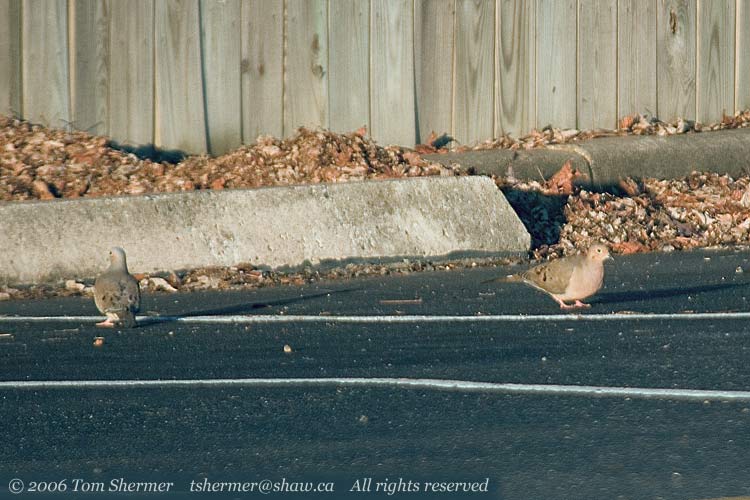 |
|
But that was it for my day. I had some difficulty in finding a good restaurant for dinner, as it was Christmas eve, but eventually I got that square filled and turned in early. The next day I had to be up early so that I could sneak into a big box for my family to unwrap.
Way more eastern than usual,
Tom
|
|